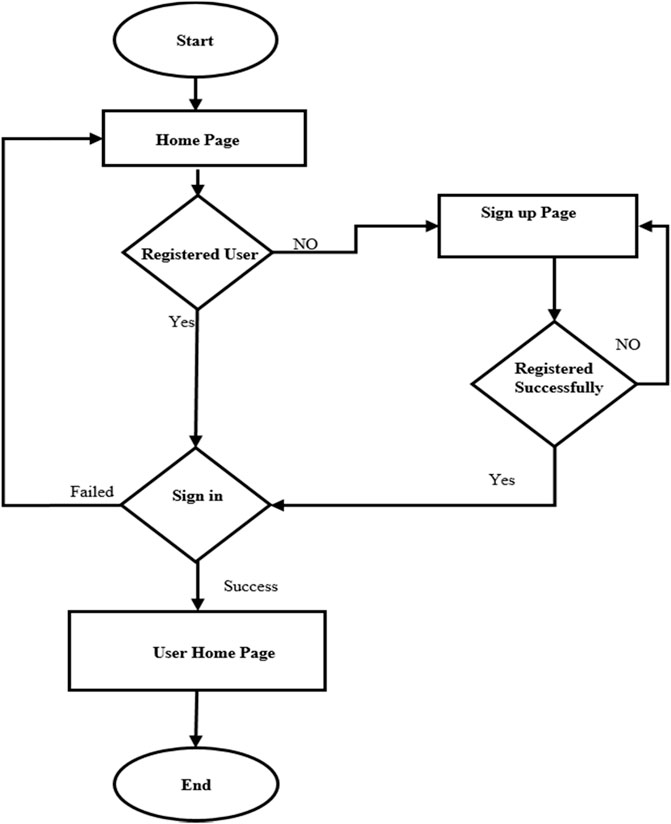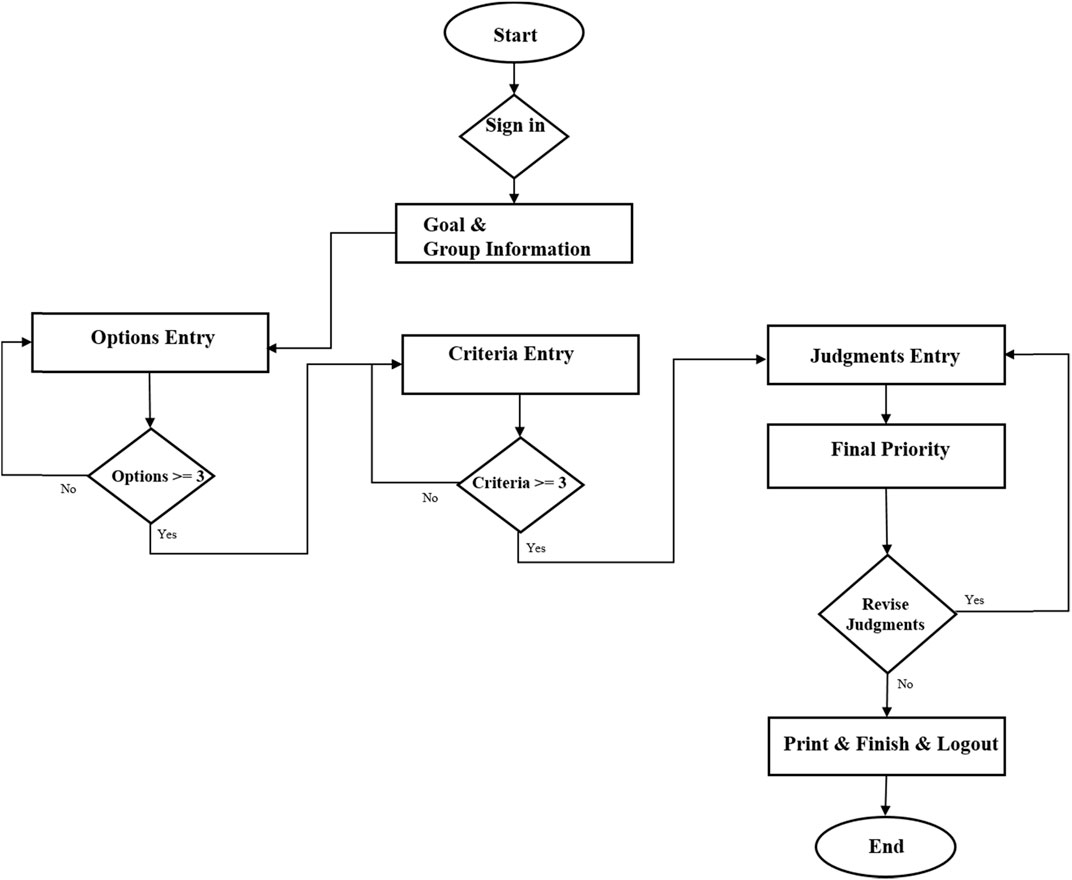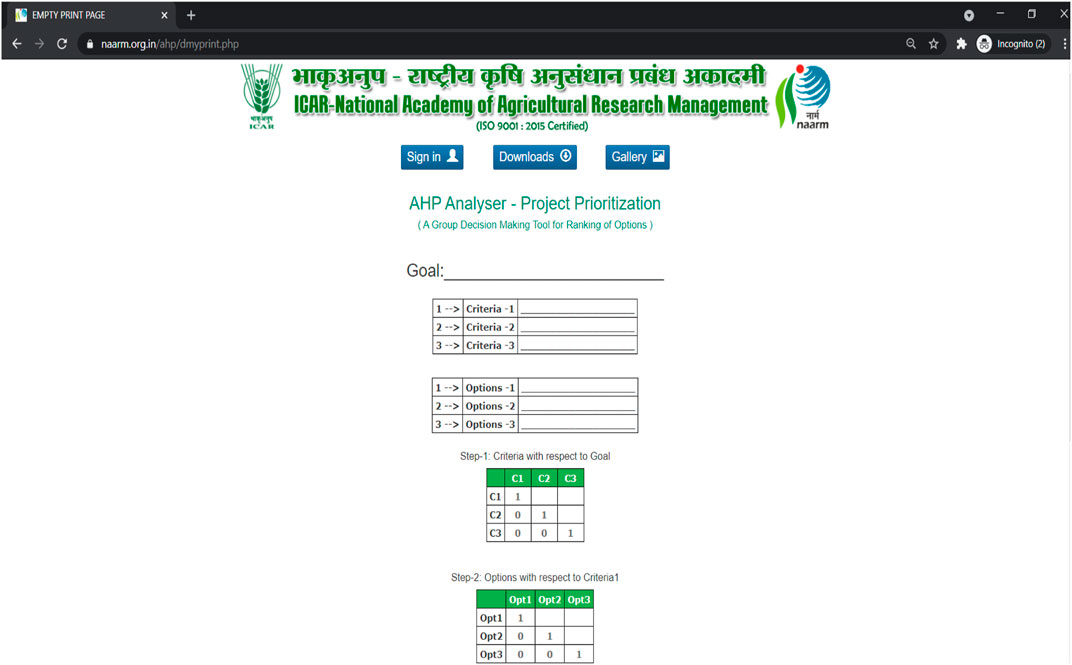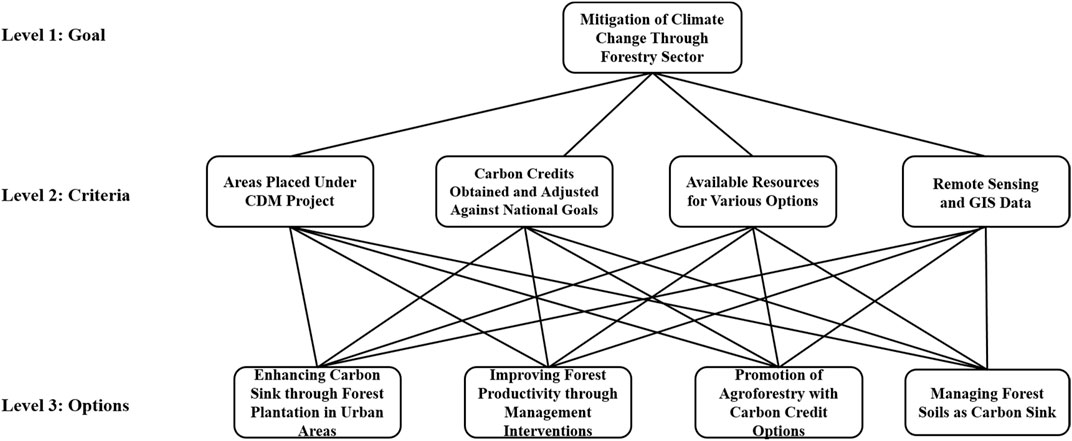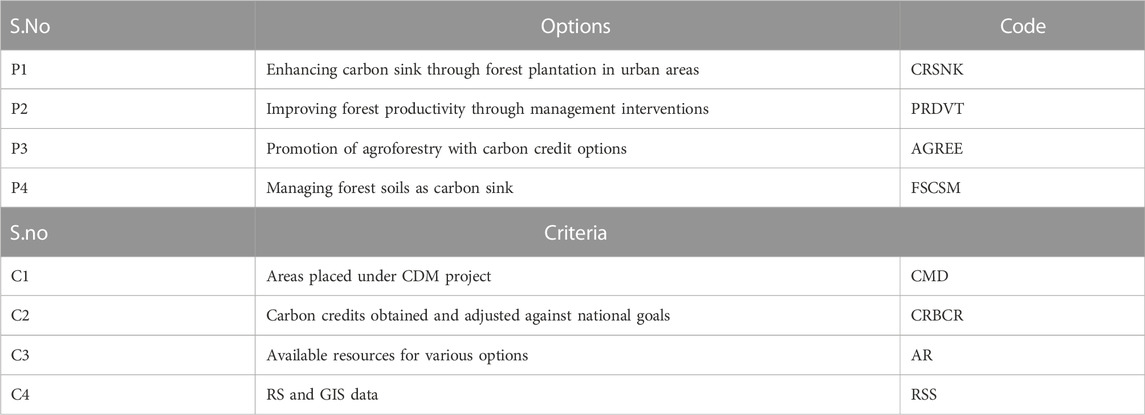- 1ICM Division, ICAR- National Academy of Agricultural Research Management, Hyderabad, India
- 2ICAR- National Academy of Agricultural Research Management, Hyderabad, India
- 3ICAR- National Academy of Agricultural Research Management, Hyderabad, India
- 4National Agricultural Higher Education Project Component 2, ICAR- National Academy of Agricultural Research Management, Hyderabad, India
- 5National Agricultural Higher Education Project Component 2, ICAR-Indian Agricultural Statistics Research Institute, New Delhi, India
- 6National Agricultural Higher Education Project, New Delhi, India
Agricultural and Forest Research and Environmental Management entail significant decisions that can impact research findings. Better findings come from well-managed research. In the research and management, a practical methodology approach is used to improve decision-making and prioritise numerous possibilities and research programmes. However, most research scientists need help setting the priority for the research project. A web-based decision-making system, i.e., the Analytic Hierarchy Process (AHP) methodology, provides support and solutions in prioritising the research project options based on multi-criteria decisions in order to eliminate these barriers in agricultural research and management. Considering these factors, the National Academy of Agricultural Research Management (NAARM), Hyderabad, Telangana, India, devised and developed “AHP Analyser”, a web-based group decision-making tool for prioritising the climate change mitigation options of research projects using an analytic hierarchy approach. It was created with PHP, JavaScript, and MySQL and is available at https://naarm.org.in/ahp/. In the present research article, we have briefly discussed the AHP methodology, analytics of publication on AHP usage, primary features of the AHP Analyser, which was built by using AHP methodology, and a case study that shows how the AHP Analyser was used to mitigate climate change in the forestry sector. Study concluded that AHP methodology can be widely applicable in various sectors for decision making, portfolio management and prioritisation; also contributes to the sustainable development goals (SDGs). Therefore, creating awareness on the advantages of AHP methodology among the researchers is critical to bring quality outputs in the research field.
1 Introduction
Agricultural and Forest Research Management is a complex interdisciplinary process. It involves many statistical analysis methodologies, operational research concepts, and managerial economics. The decision-making in agricultural research may concern clarifying, resolving, and refining a dilemma situation through the discussion and sharing the information and negotiation among the group of subjective researchers. Sometimes it may also involve the systematic use of decision analysis. The group’s decision may involve scientific evidence and subjective application. Decision-making and ranking projects based on multi-criteria is sometimes complex. Agricultural research management is a significant field in which sophisticated decision-making must be taken to achieve efficient results. There is a need for a systematic approach to research project prioritisation (Soam, 2004) and alternative evolutions. Hence, researchers can prioritise Analysis and find the best alternatives.
Project prioritisation and evaluation of options in agricultural research management supported by different Computational Technologies and Information Technologies (IT). Decision-making systems are the ones that improve the quality of research and the number of outputs and outcomes. Hierarchical criteria models can produce better ranking solutions to achieve the desired goals based on priority settings. The Analytic Hierarchy Process (AHP) (Saaty, 1980) is a well-known Decision-Making System (DMS) that may also use as a decision-making framework for a large-scale, multi-criteria decision analysis (Saaty, 2008; Saaty, 2013).
Prof. Thomas L. Saaty, a notable mathematician, created, introduced and architected the AHP framework between 1971 and 1975 while at the Wharton School (University of Pennsylvania, Philadelphia, Pa). Prof. Saaty was the leading proponent of the AHP theory (Saaty, 1980; Saaty, 1986). “AHP is a theory of relative measurement with absolute scales of multi-criteria based on judgments of knowledgeable and expert people,” according to his AHP theory (Saaty, 1980). AHP is a decision-making process that could be used in project management (Al-Harbi, 2001).
Making decisions using the AHP theory is difficult for someone who does not have a background in mathematics because the AHP theory contains several mathematical expressions at each level. For example, earlier at the time of 1990–2000, to calculate the priority of a given options based on multiple criteria, individuals needed to calculate the following factors at each level of AHP such as Eigen Vector, Weight, Component Eigen Vector, λ max (Lambda max), Consistency Index, Consistency Ratio, and Final Priority (Zhu & Dale, 2001; Ishizaka, 2011).
AHP methodology benefits can be extended to early researchers if they were taught about the decision making systems during their course curriculum of higher education and also during the foundation courses of employment. It provides an immense impact on the early researchers to improve their decision making skills and also prioritization of the research. Apart from that researchers must also concentrate on various quick decision making and learning tools and approaches (Soam et al., 2022; Thammi Raju et al., 2022).
To make every step simple, the National Academy of Agricultural Research Management (NAARM), India, developed a web-based decision-making platform called “AHP Analyser” using Java and J2EE technologies in 2010. In 2017, the complete application was developed using PHP and MySQL. Currently, the platform is used by around 1800 users from 70 + countries.
The key objectives of this study are i) to brief the methodologies and primary features of the AHP system and ii) to highlight the case study of the AHP system in mitigating climate change in the forestry sector.
2 Literatures on Analytic Hierarchy Process technique
Researchers in 114 different research areas use the AHP technique. Prof. T.L. Saaty published the first AHP publication in 1977. Since 1998, approximately 13,000 results have been found in the popular scientific database “Web of Science.” the AHP technique is being used, adapted, and applied by many researchers in both theoretical and practical aspects (Emrouznejad & Marra, 2017; Dolan, 2008). There was a gradual increase in the number of publications between 1998 and 2009, from 84 to 798, and in 2017 it increased to 1,449. From 1998 to 2018, about 57% of research articles and 41% of proceeding papers, and 2% of review papers were published. However, among various research areas from 1998 to 2018, Engineering, Computer Science, Operations Research and Management Science, Business Economics, and Environmental Sciences Ecology were the top five research areas where AHP methodology was used.
The AHP Methodology is widely used in Project Management (Al-Harbi, 2001; Tong et al., 2021; Ghorbani et al., 2022; Kuo-Wen et al., 2022), Operations Management (Subramanian, 2012; Chawla et al., 2021; Unver & Ergenc, 2021; Anuradha & Gupta, 2022), Operational Research (Vaidya, 2006), Managing Service-contracts (Sundarraj, 2004; Afiyuddin & Sudiarno, 2021), Supplier selection (Deng & Hu, 2014; Dweiri, 2016; Oyatoye, 2016), Engineering Education (Kousalya, 2012; Bafail et al., 2022), Investigation the effects of Website Quality in e-business (Lee & Kozar, 2006), Project Selection and Resource Allocation (Liberatore, 1987), Natural Resource and Environmental Decision Making (Daniel et al., 2001; Vassoney et al., 2021; Lew et al., 2022), Selection of Web analytics tool (Nakatani & Chuang, 2011), Selection of Web sites for online advertising (Ngai, 2003), etc.
3 Theory/calculation
Prof. Thomas Saaty has introduced the Analytic Hierarchy Process. It is a practical methodology for making complicated decisions (Saaty, 2008). It also provides a good way for decision-makers to set priorities and make the most suitable decision. This method was designed so that each decision is based on pairwise comparison. AHP is also used to ensure that the decision maker’s decision is consistent (Emrouznejad & Marra, 2017). Figure 1 depicts the primary form of the hierarchical structure of a decision problem with a goal at the highest level. Lower levels list the different criteria (Russo & Camanho, 2015) used to choose among different options.
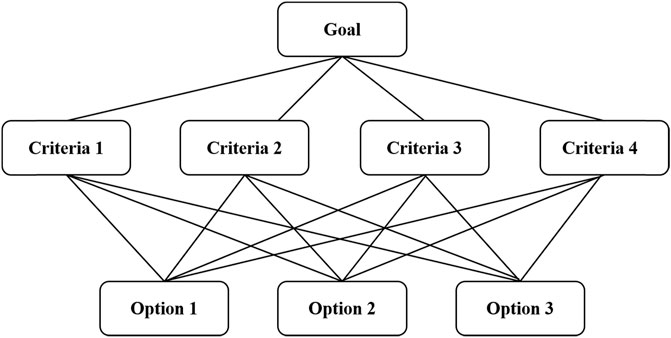
FIGURE 1. Analytic hierarchy process multi-criteria decision making Framework—Hierarchical structure of the AHP model.
It has different steps. Step 1 defines the goal and problem; Step 2 defines the hierarchy from the top through identified criteria at the intermediate level; Step 3 defines the hierarchy of alternatives/options at the lowest level; Step 4 defines the construction of a set of pairwise comparison matrices with a size of n x n—each matrix for all alternatives at the lower level. The pairwise comparisons were made using the measurement scale in Table 1. For a matrix size of n, n (n-1) judgments may be required to develop a set of matrices; Step 5 defines that reciprocals are assigned at the lower matrix; Step 6 defines that the eigenvector value of each element is calculated and the Weights of each element are calculated, the sum of weights is considered, and Component Eigenvector values are also calculated for each element; Step 7 defines that after all comparisons, the consistency is determined by using the values of eigenvalue, λmax (lambda max).
To determine consistency, index the following formula is used: Consistency Index (CI)= (λmax - n)/(n - 1), where is n = size of the matrix. The consistency of judgments can be checked by verifying the Consistency Ratio value. The Consistency Ratio is determined by using the following formula Consistency Ratio= Consistency Index/Random Index n). Where is n = size of the matrix. The Random Index values for Matrix sizes are given in Table 2.
The complex formulas used in AHP calculation are given below.
If we consider a 4*4 matrix,
3.1 Formulas
Eigen Vector = GEOMEAN (A11:A14)
Total of EV = Sum of all Eigenvector values
[(GEOMEAN (A11:A14) + GEOMEAN (B21:B24) + GEOMEAN (C31:C34) + GEOMEAN (D41:D44))]
Weight = Respective Eigen Vector Value/Total.
[Example Weight for row 1: GEOMEAN (A11:A14)/Total of Eigen Vectors)]
Component Eigen Vector = Each Column Element * Weight of Each Row
[Example for row 1: (A11*W (row1)) +(A12*W (row2)) +(A13*W (row3)) +(A14*W (row4)) ]
Lambda Max = Sum of Eigen Vector
Consistency Index= (λmax - n)/(n - 1)
Consistency Ratio = Consistency Index/RI (Size of Matrix)
3.2 Description of Analytic Hierarchy Process Analyser
The National Academy of Agricultural Research Management (NAARM) has developed a web-based decision-making platform called "AHP Analyser". It is a tool for Teaching - Learning in agriculture research management. It is designed and developed in such a way that researchers can easily access the usefulness of T.L Saaty’s AHP Methodology. Agricultural Research Scientists of various specialisations were trained in AHP Methodology, followed by AHP Analyser later. Training on the AHP Analyser was conducted at NAARM for various levels of scientists, including newly recruited scientists, young and middle-level scientists, and research management-level scientists. There were some special training on AHP Analyser for National Agricultural Research and Education System (NARES) decision makers and Project Monitoring and Evaluation members (PME). Researchers, scientists, academicians, and management professionals use AHP Analyser. From July 2017 to the present, approximately 1800 registered users from 70 countries have used AHP Analyser.
3.2.1 System architecture
The AHP Analyser has been implemented in a three-layered structure, i.e., the Presentation layer (PL), the Application layer (AL), and the Business Logic layer (DL). PL is the front-end layer, and it is implemented using HTML (Willard, 2009), CSS (Powell, 2010), and JavaScript (Flanagan, 2006; Ibrahim, 1997; Sawyer McFarland, 2011). It consists of forms for accepting a goal, criteria, and options information from the user and validating those forms using HTML, CSS, and JavaScript (Bertrand, 1997). AL contains a functional web browser and Business Logic layer, which has been implemented using Internet Information Server as an application server (Shu Zhang & Ming Wang, 2003), Bootstrap (Megosinarso, 2014; Moreto et al., 2017) as an application framework and processed by using PHP for building web-based applications (Lane & Williams, 2002; Mandava & Antony, 2012). Database Management System is the backend of the Business Logic Layer, which comprises the database and data storage systems. It has been implemented using MySQL (DuBois, 2007; Dyer, 2008). MySQL is a robust open-access relational database for creating data warehouses Schwartz et al., 2012. The relational approach has been used in designing the database. As a result, the tables have proper interaction among themselves with primary key relationships. The system architecture is shown in Figure 2.
3.3 System design
It was designed by considering the list of things such as Accuracy, Loading speed, Readability, Simplicity, Security, Valid links, Efficiency, Graphical Representation, Organization of Content, Content Utility, Navigation, and Consistency to make a practical web application (Lam, 2011; Garett et al., 2016).
AHP Analyser is developed as a web-based application using JavaScript. It can be accessed from any computer connected to the internet. The only requirement on the client side is a web browser. It works flawlessly in all browsers.
3.4 Implementation and deployment
In the process of designing the AHP Analyser, flow charts were prepared for a user login (Figure 3) and AHP Analysis (Figure 4) based on the requirements. Then, it was designed as per the AHP methodology and successfully hosted on the World Wide Web at https://naarm.org.in/ahp (Figures 5, 6). The web manager at the NAARM oversees website maintenance, troubleshooting, and so on.
3.5 Functionality and operations
Users must register to use AHP Analyser’s services. Users can then sign in to AHP Analyser with their personalised sign-in credentials. Initially, the user must fill out the necessary details of a problem statement and a goal. Following that, the user must enter at least three options as input to process the methodology. AHP’s basic methodology works best when there are at least three options. Finally, the user is asked to provide an abbreviation or code for each option to minimise the matrix row and column size while preparing the matrices for judgments. The operation of the AHP Analyser is designed systematically, as illustrated in Figure 7.
When a user selects three or more options, the system prompts them to fill out the criteria for processing the information. Users must provide at least three or more criteria. They are asked to provide the abbreviation or code for each criteria value so that matrices can be easily prepared. The Submit Criteria button will appear when the number of criteria options is greater than or equal to three. Following that, the user need to provide judgment values, after which the system will run the application and return the results. They can fill out judgments offline by printing blank judgment forms. This print empty form button is provided for user convenience; if the decision-making process takes more than a few hours, users can fill out the printed form first and then fill out the online form.
4 Results and discussion
4.1 A case study on climate mitigation in the forest sector using Analytic Hierarchy Process
AHP Analyser was used to evaluate many real-time issues. This section will look at one of the most well-researched forestry issues. The present evaluation was carried out by the Indian Forest Service (IFS) probationary trainees from the 2017 batch. The IFS probationers of Indira Gandhi National Forest Academy (IGNFA), Dehradun, were trained on “Participatory Rural Appraisal (PRA) and Communication Strategies” at ICAR-NAARM from October 6 to 7, 2018. About 84 participants were divided into 12 groups and given the topic “Climate Change Mitigation through the Forestry Sector”. The groups have identified the various options and criteria to solve the issue, which is illustrated in Figure 8. The abbreviations for options and criteria have been given, as shown in Table 3.
The users’ group indicated their preferences or priorities for each decision alternative in terms of how it contributes to each criterion by following the AHP procedure described in Section 2, Table 1, as shown in Table 4. First, each element in the row is compared to each element in the column in the AHP methodology. For example, CMD is compared to CMD in Table 4. Because, both values are equally important in this case, they chose 1. For equally important values, the AHP Analyser System automatically assigns the value “1.” CMD is now compared to CRBCR; if CMD is strongly more important than CRBCR, we write the absolute number of scale. If CRBCR is more important than CMD, we choose the scale’s reciprocal value. For example, assume that CRBCR is strongly more important than CMD, and then choose the reciprocal of strongly more important, i.e., 1/5. Similarly, all elements of the row can be compared to all elements of the upper diagonal matrix.
A group of IFS officers filled the above judgments in the pair comparison matrix. Then, after entering judgment values into AHP Analyser, the system computes reciprocal values.
The AHP Analyser software can then perform the following tasks automatically:
1. Calculating the pairwise comparison matrix for criteria with respect to the goal
2. Obtaining the eigenvectors (EV)
3. Obtaining the component eigenvectors (COMP-EV)
4. Obtaining the consistency index (CI)
5. Determining the consistency ratio (CR)
6. Calculating λ max
7. Determining the Global Priority
The calculation for these items are explained below.
The EV, COMP-EV, CI, CR, and λ max in Table 5 can be obtained as shown below.
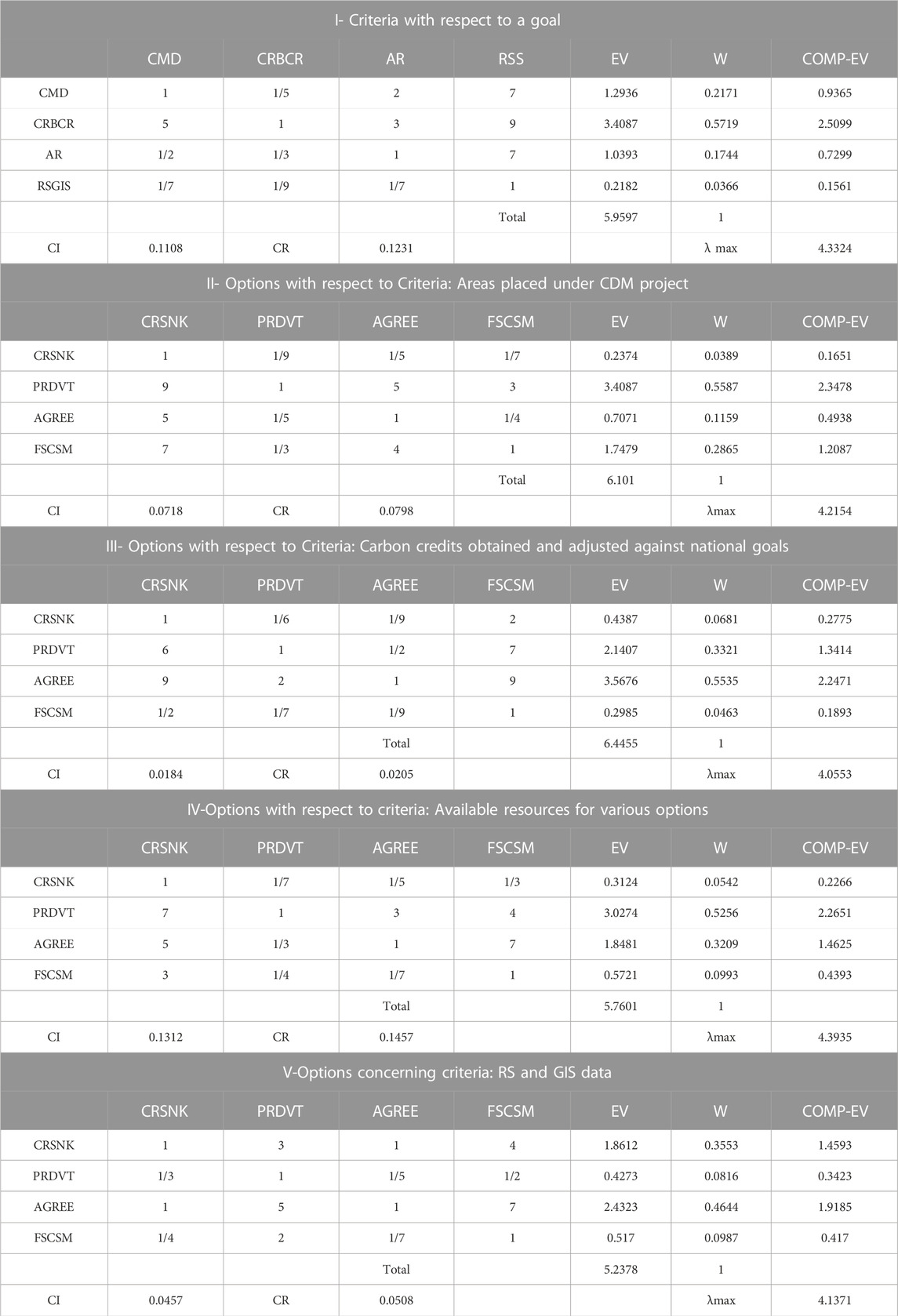
TABLE 5. Options with respect to criteria: I) goals, II) Areas placed under the CDM project, III) Carbon credits obtained and adjusted against national goals, IV) Available resources for various options, and V) RS and GIS data.

As the value of CR is less than 0.2, the judgments have consistency.
Similarly, the values of CR for the remaining criteria can be found as shown in Table 5.
The ultimate step in AHP Analyser is to calculate the global priority. The global priority can be calculated as follows:
Final Priority of Option = [(EV value of option with respect to Criteria 1* Weight of respective Criteria 1)+ [(EV value of option with respect to Criteria 2* Weight of respective Criteria 2)+ ………. +[(EV value of option with respect to Criteria n* Weight of respective Criteria n)]
For example, the Global Priority of CRSNK can be calculated as given below.

Table 6 shows the global priorities of all options. The global priorities values are converted into percentages by multiplying each priority by 100. Then the values are transformed as:
Global Priority in Percentages for CRSNK = 0.0698*100 = 6.98%
Global Priority in Percentages for PRDVT = 0.4059*100 = 40.59%
Global Priority in Percentages for AGRFR = 0.4147*100 = 41.47%
Global Priority in Percentages for FSCSM = 0.1096*100 = 10.96%
According to AHP Analyser’s judgments and analysis results, the expert group prioritised AGRFR at 41.47%, PRDVT at 40.59%, and FSCSM at 10.96%. With a score of 6.98 per cent, this expert group completely ignored the option CRSNK.
The expert group concludes that based on the goals and criteria, “Climate Change Mitigation through the Forestry sector” is feasible if they use “Promotion of agroforestry with carbon credit options.”
4.2 Extended applicability of Analytic Hierarchy Process Analyser for sustainable development
Environmental sustainability is a current burning issue that worries scholars and governments worldwide. AHP Analyser widely used in various fields due to their effectiveness and robustness. The AHP Analyser is developed with a perception to apply the methodology in numerous sectors. Either way, it contributes to the sustainable development goals (SDGs). For example, corporate social responsibility (CSR) is a self-regulating business model that helps in the sustainable development of forests and the environment. Accordingly, we can prioritise the CSR performance indicators for sustainable development (Varyash et al., 2020). AHP methodology is used for analysing the technologies, inputs, and resources for investments in environmental and natural resource management (NRM) projects (Dincer et al., 2022a; 2022b), including prioritisation of renewable energy alternatives (Li et al., 2022). Low-carbon economy, energy conservation and emission reduction are critically important to build a low-carbon economic environment. AHP-based evaluation index has been developed for the Construction of Low Carbon Environment emissions reduction targets (Xie and Yuan, 2020; Li et al., 2021; Li et al., 2022a, Li et al., 2022b). Unlike other methods, AHP assesses the regional growth of small businesses for environmental dimensions of sustainability (Multalimov et al., 2021). In the sustainable development, this tool helps in Oil and Gas Pipeline Route Selection (Wan et al., 2011) that simplifies the Oil and Exchange Rates of Oil-Exporting and Oil-Importing Countries (Candila et al., 2021). Its applicability is evidenced in defining the significant factors of currency exchange rate risk (Silahtaroğlu et al., 2021); this can also apply to the empirical assessment of the foreign exchange volatility effect (Saqib et al., 2021). In Public Procurement Management systems, AHP plays a more significant role in identifying vulnerabilities like the risk of corruption (Firadi & Alami, 2019); reducing corruption helps increase GDP per capita (Moiseev et al., 2020). Drivers of energy consumption are crucial to coordinate the relationship between energy and national economic growth (Wang et al., 2019); through AHP-based decision models, energy systems policy was developed (Toossi et al., 2013).
5 Conclusion
Management of agricultural and forest research involves many scientific decisions and priorities based on numerous complex factors that must be considered when deciding the research problems to be investigated. Prioritisation of agricultural and forest research projects; impact studies of research projects; identification of appropriate methods and options for research; project selection and prioritisation; elimination of unacceptable options; monitoring and evaluation of research projects; financial allocation and portfolio management of project development are some of the potential application areas in the agricultural research management.
AHP Analyser developed by NAARM, Hyderabad, offers assistance and solutions to potential application areas in agricultural and forest research management that improve the quality of the research and quantity of outcomes. It provides a platform for implementing the AHP methodology in agricultural and forest research management with global access to prioritise, multi-criteria evaluation, and decision-making that aid in achieving the desired goals.
We conclude that, AHP methodology widely used in numerous sectors for decision making, portfolio management and prioritisation. Either way, it contributes to the sustainable development goals (SDGs). Awareness about decision making tools in the agricultural and environmental research is pivotal for improving the quality outputs. Therefore, researchers are advised to learn and utilize the advantages of AHP Analyser in order to achieve sustainability in the field of research.
Data availability statement
The raw data supporting the conclusion of this article will be made available by the authors, without undue reservation.
Author contributions
All authors contributed to the study’s conception and design. Conceptualization, methodology, and supervision performed by SS. Project Administration and Supervision by PK and RA. Material preparation, data collection, and analysis were performed by SS, NS, and BY. Validation and Formal Analysis done by SM. The first draft of the manuscript was written by BR and SR. Software was developed by SS and BR. All authors read and approved the final manuscript.
Funding
This study was funded by the National Agricultural Higher Education Project.
Acknowledgments
Authors express sincere thanks to the Director, ICAR-National Academy of Agricultural Research Management, Hyderabad, for his extensive support during this study. We also acknowledge the contributions of Mr Ch. Sridharababu and Mr T. RajKumar Project Staff of ICAR-NAARM, Hyderabad for this study.
Conflict of interest
The authors declare that the research was conducted in the absence of any commercial or financial relationships that could be construed as a potential conflict of interest.
Publisher’s note
All claims expressed in this article are solely those of the authors and do not necessarily represent those of their affiliated organizations, or those of the publisher, the editors and the reviewers. Any product that may be evaluated in this article, or claim that may be made by its manufacturer, is not guaranteed or endorsed by the publisher.
References
Afiyuddin, A., and Sudiarno, A. (2021). Maintenance heavy equipment management through contract models or company it self. IPTEK J. Proc. Ser. 0 (6), 407–410. doi:10.12962/j23546026.y2020i6.11130
Al-Harbi, K. M. A. S. (2001). Application of the AHP in project management. Int. J. Proj. Manag. 19 (1), 19–27. doi:10.1016/S0263-7863(99)00038-1
Anuradha , , and Gupta, S. (2022). AHP-based multi-criteria decision-making for forest sustainability of lower Himalayan foothills in northern circle, India—A case study. Environ. Monit. Assess. 194, 849. doi:10.1007/s10661-022-10510-0
Bafail, O. A., Abdulaal, R. M., and Kabli, M. R. (2022). AHP-RAPS approach for evaluating the productivity of engineering departments at a public university. Systems 10 (4), 107. doi:10.3390/systems10040107
Candila, V., Maximov, D., Mikhaylov, A., Moiseev, N., Senjyu, T., and Tryndina, N. (2021). On the relationship between oil and exchange rates of oil-exporting and oil-importing countries: From the great recession period to the Covid-19 era. Energies 14 (23), 8046. doi:10.3390/en14238046
Chawla, V. K., Chhabra, D., Gupta, P., and Naaz, S. (2021). Evaluation of green operations management by fuzzy analytical hierarchy process. Mater. Today Proc. 38, 274–279.
Daniel, S., Kangas, J., Mendoza, G. A., and Pesonen, M. (2001). The analytic hierarchy process in natural resource and environmental decision making. doi:10.1007/978-94-015-9799-9Springer, Netherlands, Europe,
Deng, X., Hu, Y., Deng, Y., and Mahadevan, S. (2014). Supplier selection using AHP methodology extended by D numbers. Expert Syst. Appl. 41 (1), 156–167. doi:10.1016/j.eswa.2013.07.018
Dınçer, H., Yüksel, S., Mikhaylov, A., Barykin, S. E., Aksoy, T., and Hacioğlu, Ü. (2022a). Analysis of environmental priorities for green project investments using an integrated q-rung orthopair fuzzy modeling. IEEE Access 10, 50996–51007. doi:10.1109/access.2022.3174058
Dinçer, H., Yüksel, S., Mikhaylov, A., Pinter, G., and Shaikh, Z. A. (2022b). Analysis of renewable-friendly smart grid technologies for the distributed energy investment projects using a hybrid picture fuzzy rough decision-making approach. Energy Rep. 8, 11466–11477. doi:10.1016/j.egyr.2022.08.275
Dolan, J. G. (2008). Shared decision-making - transferring research into practice: The Analytic Hierarchy Process (AHP). Patient Educ. Couns. 73 (3), 418–425. doi:10.1016/j.pec.2008.07.032
Dweiri, F., Kumar, S., Khan, S. A., and Jain, V. (2016). Designing an integrated AHP based decision support system for supplier selection in automotive industry. Expert Syst. Appl. 62, 273–283. doi:10.1016/j.eswa.2016.06.030
Emrouznejad, A., and Marra, M. (2017). The state of the art development of AHP (1979–2017): A literature review with a social network analysis. Int. J. Prod. Res. 55 (22), 6653–6675. doi:10.1080/00207543.2017.1334976
Firadi, H., and Alami, Y. (2019). Analysis of the vulnerability of public procurement management processes in Morocco to the risk of corruption: An approach based on the analytic hierarchy process (AHP). Eur. J. Sci. Res. 155, 13–33.
Garett, R., Chiu, J., Young, D. S., and Zhang, L. (2016). A literature review: Website design and user engagement. Online J. Commun. Media Technol. 6 (3), 1–14. doi:10.29333/ojcmt/2556
Ghorbani, M. K., Hamidifar, H., Skoulikaris, C., and Nones, M. (2022). Concept-based integration of project management and strategic management of rubber dam projects using the SWOT–AHP method. Sustainability 14 (5), 2541. doi:10.3390/su14052541
Ibrahim, B. (1997). Use of HTML forms in complex user interfaces for server-side applications. Int. J. Human-Computer Stud. 46 (6), 761–771. doi:10.1006/ijhc.1996.0112
Ishizaka, A., and Labib, A. (2011). Review of the main developments in the analytic hierarchy process. Expert Syst. Appl. 38 (11), 14336–14345. doi:10.1016/j.eswa.2011.04.143
Kousalya, P., Mahender Reddy, G., Supraja, S., and Shyam Prasad, V. (2012). Analytical Hierarchy Process approach – an application of engineering education. Math. Aeterna 2 (10), 861–878.
Kuo-Wen, W. U., and Wen-Hsiang, L. A. I. (2022). AHP analysis of key success factors for enterprise transformation; from the viewpoint of project management process. J. Soc. Adm. Sci. 9 (1), 22–45.
Lam, M. (2011). Methodologies, tools, and techniques in practice for Web application development. J. Technol. Res. 3, 1–20.
Lane, D., and Williams, H. E. (2002). Web database applications with PHP and MySQL. Germany: O'Reilly.
Lee, Y., and Kozar, K. A. (2006). Investigating the effect of website quality on e-business success: An analytic hierarchy process (AHP) approach. Decis. Support Syst. 42 (3), 1383–1401. doi:10.1016/j.dss.2005.11.005
Lew, B., Tarnapolski, O., Afgin, Y., Portal, Y., Ignat, T., Yudachev, V., et al. (2022). Irrigation with permeates to upgrade the quality of red pepper: A case study in arava region, Israel. Environ. Technol. 43 (2), 264–274. doi:10.1080/21622515.2020.1784294
Li, J., Yüksel, S., Dınçer, H., Mikhaylov, A., and Barykin, S. E. (2022). Bipolar q-ROF hybrid decision making model with golden cut for analyzing the levelized cost of renewable energy alternatives. IEEE Access 10, 42507–42517. doi:10.1109/access.2022.3168315
Li, R., Li, L., and Wang, Q. (2022b). The impact of energy efficiency on carbon emissions: Evidence from the transportation sector in Chinese 30 provinces. Sustain. Cities Soc. 82, 103880. doi:10.1016/j.scs.2022.103880
Li, R., Wang, Q., Liu, Y., and Jiang, R. (2021). Per-capita carbon emissions in 147 countries: The effect of economic, energy, social, and trade structural changes. Sustain. Prod. Consum. 27, 1149–1164. doi:10.1016/j.spc.2021.02.031
Li, R., Wang, X., and Wang, Q. (2022a). Does renewable energy reduce ecological footprint at the expense of economic growth? An empirical analysis of 120 countries. J. Clean. Prod. 346, 131207. doi:10.1016/j.jclepro.2022.131207
Liberatore, M. J. (1987). An extension of the analytic hierarchy process for industrial R&D project selection and resource allocation. IEEE Trans. Eng. Manage. 34 (1), 12–18. doi:10.1109/TEM.1987.6498854
Mandava, A., and Antony, S. (2012). A review and Analysis of technologies for developing web applications. https://www.researchgate.net/publication/230668912_A_review_and_analysis_of_technologies_for_developing_web_applications.
Megosinarso, R. (2014). Step by step Bootstrap 3: A quick guide to responsive web development using Bootstrap 3. California, CA, USA, Createspace Independent Pub.
Moiseev, N., Mikhaylov, A., Varyash, I., and Saqib, A. (2020). Investigating the relation of GDP per capita and corruption index. Entrepreneursh. Sustain. Issues 8 (1), 780–794. doi:10.9770/jesi.2020.8.1(52)
Moreto, S., Marah, J., Lambert, M., and Jakobus, B. (2017). Bootstrap 4 responsive web design. UK: Packt Publishing.
Mutalimov, V., Kovaleva, I., Mikhaylov, A., and Stepanova, D. (2021). Assessing regional growth of small business in Russia. Entrepreneurial Bus. Econ. Rev. 9 (3), 119–133. doi:10.15678/eber.2021.090308
Nakatani, K., and Chuang, T. T. (2011). A web analytics tool selection method: An analytical hierarchy process approach. Internet Res. 21 (2), 171–186. doi:10.1108/10662241111123757
Ngai, E. W. T. (2003). Selection of websites for online advertising using the AHP. Inf. Manag. 40 (4), 233–242. doi:10.1016/S0378-7206(02)00004-6
Oyatoye, E. O., and Odulana, A. A. (2016). “A prototype AHP system for contractor selection decision,” in Applications and theory of analytic hierarchy process - decision making for strategic decisions (Manhattan, NY: InTech), doi:10.5772/64425
Powell, T A. (2010). Html & CSS: The complete reference. The McGraw-Hill Companies. New York, NY, USA,
Russo, R., and Camanho, R. (2015). Criteria in AHP: A systematic review of literature. Procedia Comput. Sci. 55, 1123–1132. doi:10.1016/j.procs.2015.07.081
Saaty, T. L. (2013). Analytic network process. Multi-criteria decision analysis. Methods Softw., 59–80. doi:10.1002/9781118644898.ch3
Saaty, T. L. (1986). Axiomatic foundation of the analytic hierarchy process. Manag. Sci. 32 (7), 841–855. doi:10.1287/mnsc.32.7.841
Saaty, T. L. (2008). Decision-making with the analytic hierarchy process. Int. J. Serv. Sci. 1 (1), 83. doi:10.1504/IJSSCI.2008.017590
Saqib, A., Chan, T-H., Mikhaylov, A., and Lean, H. H. (2021). Are the responses of sectoral energy imports asymmetric to exchange rate volatilities in Pakistan? Evidence from recent foreign exchange regime. Front. Energy Res. 9, 614463. doi:10.3389/fenrg.2021.614463
Sawyer McFarland, David (2011). JavaScript & jQuery: The missing manual. Sebastopol, CA: O'Reilly Media, Inc.
Schwartz, Baron, Zaitsev, Peter, and Tkachenko, Vadim (2012). High-performance MySQL: Optimisation, backups, and replication. Sebastopol, CA: O'Reilly Media, Inc.
Silahtaroğlu, G., Dinçer, H., and Yüksel, S. (2021). “Defining the significant factors of currency exchange rate risk by considering text mining and fuzzy AHP,” in Data science and multiple criteria decision making approaches in finance. Multiple criteria decision making (Cham, NY, USA: Springer). doi:10.1007/978-3-030-74176-1_7
Soam, S. K., Raghupathi, B., Sharma, S., Yashavanth, B. S., Balakrishnan, M., Srinivasa Rao, N., et al. (2022). Mind mapping as a learning and teaching tool in agricultural higher education in India. irjee. 22 (3), 176–181. doi:10.54986/irjee/2022/jul_sep/176-181
Soam, S. K. (2004). Research project prioritisation through training in analytic hierarchy process: A case study of a village in semi-arid region of central India. Uganda J. Agric. Sci. 9, 157–162.
Subramanian, N., and Ramanathan, R. (2012). A review of applications of Analytic Hierarchy Process in operations management. Int. J. Prod. Econ. 138 (2), 215–241. doi:10.1016/j.ijpe.2012.03.036
Sundarraj, R. P. (2004). A Web-based AHP approach to standardize the process of managing service-contracts. Decis. Support Syst. 37 (3), 343–365. doi:10.1016/S0167-9236(03)00033-2
Thammi Raju, D., Ramesh, P., Raghuvanshi, R., Yashavanth, B. S., Sontakki, B. S., Krishnan, P., et al. (2022). Students’ approaches to learning in agricultural higher education. Asian J. Agric. Ext. Econ. Sociol. 40 (5), 19–29. doi:10.9734/ajaees/2022/v40i530882
Tong, D., and Wang, Y. (2021). Summary of application of fuzzy mathematics in construction project management. World J. Eng. Technol. 9 (3), 407–422. doi:10.1016/j.matpr.2020.07.200
Toossi, A., Camci, F., and Varga, L. (2013). IEEE, 1456–1460.Developing an AHP based decision model for energy systems policymaking, 2013 IEEE Int. Conf. Industrial Technol. (ICIT), Cape Town, South Africa,
Unver, S., and Ergenc, I. (2021). Safety risk identification and prioritize of forest logging activities using analytic hierarchy process (AHP). Alexandria Eng. J. 60 (1), 1591–1599. doi:10.1016/j.aej.2020.11.012
Vaidya, O. S., and Kumar, S. (2006). Analytic hierarchy process: An overview of applications. Eur. J. Operational Res. 169 (1), 1–29. doi:10.1016/j.ejor.2004.04.028
Varyash, I., Mikhaylov, A., Moiseev, N., and Aleshin, K. (2020). Triple bottom line and corporate social responsibility performance indicators for Russian companies. Entrepreneursh. Sustain. Issues 8 (1), 313–329. doi:10.9770/jesi.2020.8.1(22)
Vassoney, E., Mammoliti Mochet, A., Desiderio, E., Negro, G., Pilloni, M. G., and Comoglio, C. (2021). Comparing multi-criteria decision-making methods for the assessment of flow release scenarios from small hydropower plants in the alpine area. Front. Environ. Sci. 9, 635100. doi:10.3389/fenvs.2021.635100
Wan, J., Qi, G., Zeng, Z., and Sun, S. (2011). “The application of AHP in oil and gas pipeline route selection,” 2011 19th international conference on geoinformatics (IEEE), 1–4. Shanghai, China,
Wang, Q., Su, M., Li, R., and Ponce, P. (2019). The effects of energy prices, urbanization and economic growth on energy consumption per capita in 186 countries. J. Clean. Prod. 225, 1017–1032. doi:10.1016/j.jclepro.2019.04.008
Xie, L., and Yuan, H. (2020). Construction of low carbon environment evaluation index system based on AHP IOP conference series: Earth and environmental science. IOP Conf. Ser. Earth Environ. Sci. 440 (4), 042105. doi:10.1088/1755-1315/440/4/042105
Zhang, Shu, and Ming Wang, v. (2003). “Server classifications, editor(s),” in Hossein bidgoli, encyclopedia of information systems (Elsevier), 57–69. doi:10.1016/B0-12-227240-4/00157-XNetherlands, Europe,
Keywords: analytic hierarchy process, decision making tool, agricultural research management, environmental management, climate mitigation, forest sector
Citation: Soam SK, N SR, BS Y, Balasani R, S R, Marwaha S, Kumar P and Agrawal RC (2023) AHP Analyser: A decision-making tool for prioritizing climate change mitigation options and forest management. Front. Environ. Sci. 10:1099996. doi: 10.3389/fenvs.2022.1099996
Received: 16 November 2022; Accepted: 05 December 2022;
Published: 04 January 2023.
Edited by:
Alexey Mikhaylov, Financial University under the Government of the Russian Federation, RussiaReviewed by:
Jaehyjng An, Hankuk University of Foreign Studies, South KoreaLarisa Yarovaya, University of Southampton, United Kingdom
Copyright © 2023 Soam, N, BS, Balasani, S, Marwaha, Kumar and Agrawal. This is an open-access article distributed under the terms of the Creative Commons Attribution License (CC BY). The use, distribution or reproduction in other forums is permitted, provided the original author(s) and the copyright owner(s) are credited and that the original publication in this journal is cited, in accordance with accepted academic practice. No use, distribution or reproduction is permitted which does not comply with these terms.
*Correspondence: Sudhir Kumar Soam, c3VkaGlyLnNvYW1AaWNhci5nb3YuaW4=
 Sudhir Kumar Soam
Sudhir Kumar Soam Srinivasa Rao N2
Srinivasa Rao N2 Yashavanth BS
Yashavanth BS Raghupathi Balasani
Raghupathi Balasani Rakesh S
Rakesh S


